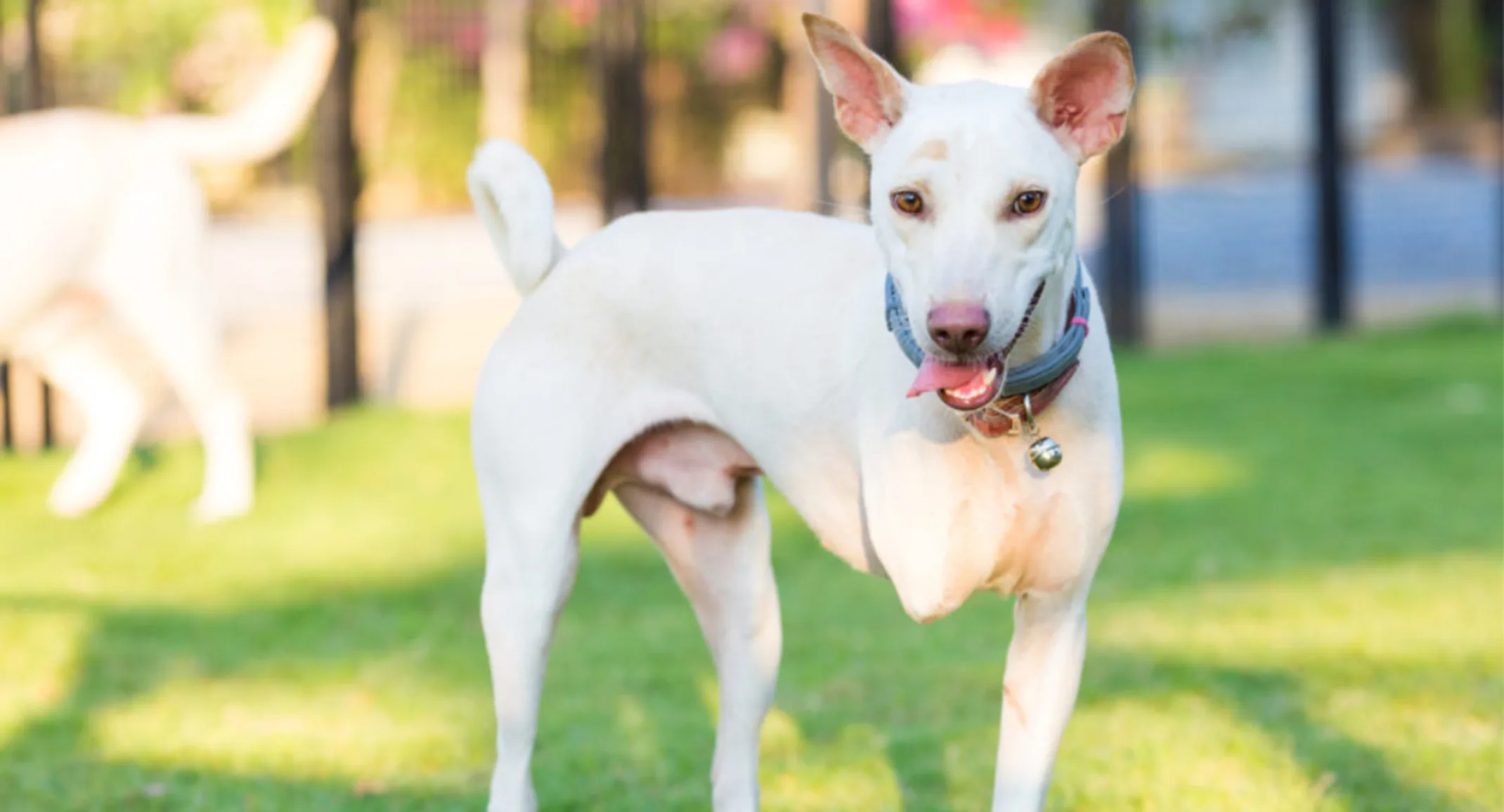What To Expect After A Limb Amputation
Surgery

Limb amputation is often the best way to relieve a pet’s suffering if a bone cannot be repaired, or tissue damage is too extensive to heal, and is commonly performed in pets with bone cancer, a badly broken bone, or severe limb trauma. Although pets typically do remarkably well after this procedure, owners are often devastated to learn their beloved pets will live the rest of their life on three legs. Navigating the days and weeks after your pet’s limb amputation will be critical to learning your pet’s—and your—new normal. Here is what you can expect after your pet’s limb amputation procedure.
PAIN CONTROL FOR YOUR PET
Limb amputation can be a significantly painful procedure, but we will preemptively address your pet’s pain to prevent her discomfort and will continue to provide post-operative pain control. Our goal is to prevent your pet from becoming painful by using a combination of techniques and medications. Your pet’s amputation will be performed under general anesthesia and will include pain control that will extend into her recovery period. We typically use multimodal pain control for amputation surgery that may include:
Pre-operative analgesic administration
Pre-operative anti-inflammatory administration
Transdermal analgesic patch that provides pain control for several days
Intra- and post-operative constant rate infusion (CRI) of pain medication
Post-operative injectable and oral pain medications
Pain control will be continued during your pet’s postoperative hospitalization, and potentially when she returns home. Your veterinarian will speak with you during your pet’s discharge about medications you should administer to continue to keep your pet comfortable at home.
INCISIONAL CARE FOR YOUR PET
Your pet will have skin sutures that will require monitoring until they are removed approximately 10 days after her surgery. She likely will come home wearing an e-collar, which must stay on at all times, to prevent her from chewing out her incision sutures, or licking the incision and causing a skin infection. You will need to check your pet’s incision daily for abnormal swelling, bleeding, redness, or draining signs.
ACTIVITY RESTRICTIONS AFTER YOUR PET’S AMPUTATION SURGERY
Although our goal is for your pet to learn to walk on three legs, she will need to rest immediately after her surgery, while she is gaining strength and coordination with her new weight distribution, and then must not be allowed to move around freely for the first several days, while she is learning how to walk on three legs. Encourage her to rest in a safe location away from stairs and slippery floors, and use a sling to take her outdoors for potty breaks every few hours.
We encourage a gradual return to normal activity over several weeks to allow your pet to gain coordination and confidence on three legs. Carefully follow your veterinarian’s instructions regarding activity restrictions, to allow for proper healing, and to avoid a fall-related injury.
POSSIBLE COMPLICATIONS AFTER AMPUTATION SURGERY
Most patients recover without significant complications; however, minor complications may occur, including:
Bruising
— Minor bruising around the incision site is common after any surgery and should resolve after several days.
Seroma formation
— Fluid may accumulate under your pet’s skin near the bottom of her remaining stump. As long as swelling is not excessive, this is a minor complication, and the fluid should slowly resorb over one to two weeks.
Infection
— Skin infection is not common unless your dog licks the incision or it becomes contaminated from her environment. Ensure your pet wears her e-collar at all times, and keep her in a clean area with clean, dry bedding. If you notice infection signs, such as redness, swelling, warmth, or pus, contact us immediately.
Neuroma formation
— Occasionally, nerves that were cut during surgery form small lumps that can be painful. Although this complication is rare, treatment options are available.
Phantom pain
— Many owners of pets who need limb amputation are concerned about their pet suffering from phantom pain (i.e., pain from a body part that has been removed), but such pain is uncommon in pets and is not a typical limb-amputation complication.
Your veterinarian may prescribe physical rehabilitation during your pet’s recovery, which may include laser treatments, muscular stimulation, and therapeutic exercises that can help minimize complications, and help your pet get back on her feet more quickly.
HELPING YOUR PET LEARN TO WALK ON THREE LEGS
Amputation will change your pet’s weight distribution and center of gravity, so she will require your help for her first several days at home. You can use a sling to help support her weight for bathroom trips outside and short walks around your house. Place the sling under your pet’s chest after a front-leg amputation, or under her belly after her rear leg is amputated, to help her walk, and learn how to redistribute her weight to avoid falling. Once your pet seems more steady, you can loosen your support of the sling, and allow her to bear most of her weight, with the sling in place to catch her if she falls. As your pet gains more confidence, you can phase out sling use entirely. Pets with rear-leg amputations tend to adapt more quickly than those with front-leg amputations, but owners are frequently surprised at how quickly pets learn to walk on three legs.
WEIGHT CONTROL FOR YOUR THREE-LEGGED PET
Since your pet is now bearing all her weight on only three legs, keeping her at a healthy weight is vital, to prevent arthritis as much as possible. For long-term success, maintain a healthy lifestyle to keep her in good physical condition and prevent obesity, which will place more weight on her remaining joints, and make degenerative joint disease more likely. Arthritis prevention is critical to her quality of life since she will not be able to shift her weight to compensate for painful joints.
If your family veterinarian has recommended limb amputation, or you have been referred to VVC for your pet’s amputation surgery, contact us to discuss making your pet’s experience as stress- and pain-free as possible.
